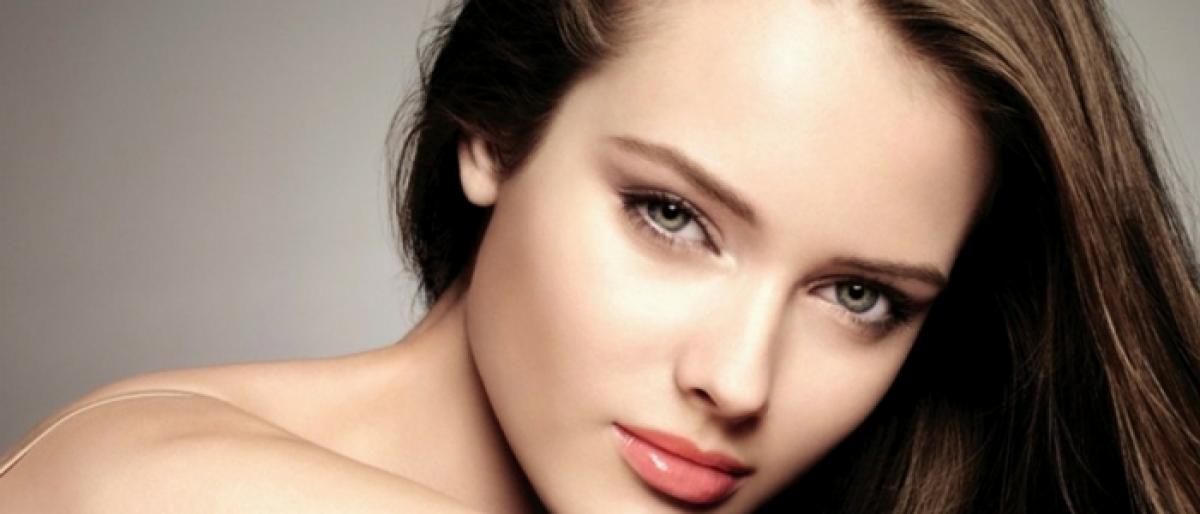Live
- A Guide to Temperature and Humidity Standards in Data Center Server Rooms
- Gadwal collector briefs on details of voters
- Jupally Krishna Rao takes part in Alampur rallu
- Bharath Prasad files 3rd Nomination
- Baisakh Month: A Time of Auspicious Beginnings and Sacred Festivals
- Oust BJD govt for overall development, says Shah
- Unveiling the Hidden Gems: Surprising Health Benefits of Garlic Peels
- Overcoming Sleep Struggles: A Comprehensive Guide to a Restful Night
- RTC bus hit the auto
- MLA Kuchukula Rajesh Reddy participated in the Birappa festival
Just In

The onset of facial lines and wrinkles are an inevitable part of growing older. Thanks to this era of digital transformation, where we can easily hide those facial lines in images and videos in just a click.
Avoid surgery to look younger with facial rejuvenation
The onset of facial lines and wrinkles are an inevitable part of growing older. Thanks to this era of digital transformation, where we can easily hide those facial lines in images and videos in just a click.
However, when our expression lines start to detract from our appearance, it’s time for many of us to turn to the raft of products and minimally invasive treatments to help improve our real appearance.
Non-surgical facial rejuvenation encompasses a host of different treatments and helps avoid any surgical risks. Before opting for one, read below to know some of the common non-surgical facial rejuvenation treatments:
Botox
Botox (Botulinum Toxin Type A) is a genetically engineered and purified enzyme that is injected in minute quantities to relax the muscles that cause the unwanted lines and wrinkles.
Botox works well on the forehead, the frown lines between the eyes, crow’s feet, marionette lines, chin creases and neck bands, and, to some degree, on smoker’s lines around mouth. The results last from three to six months.
Fillers
A filling agent is designed to smooth out the lines and wrinkles that can be seen when the face is at rest. It’s a sugar-based gel that goes by the chemical name hyaluronic acid which is a natural product that occurs in human skin.
The product is used to fill lines on the cheeks, between the nose and the corner of the mouth, lines around mouth, and to rejuvenate and repair the lips.
Treatment with hyaluronic acid can last six to 12 months before being absorbed by the body. This is much longer than protein filler alternatives.
Often a combination approach is adopted. Botox is first used to smooth the lines, and then filling agents employed to fill the deeper crevices and wrinkles.
Intense pulsed light
Intense pulsed light (IPL) therapy involves a laser like device that uses filters to produce a broad spectrum of light to treat different conditions. IPL is an effective treatment for wrinkles, evening out skin tone, removing unwanted hair and correcting some sun damage.
For optimum results, a series of treatments is usually required. The skin’s appearance will continue to improve after the treatments have ceased due to further collagen rebuilding.
The newer generation IPL devices tend to have a better effect within their desired target range. The second generation of IPL devices are designed to treat redness, freckling, veins, and changes in the skin associated with chronic sun exposure.
Peels
Peel programmes require a commitment to a skin fitness regimen that will last over six months. I usually design and initiate a home programme for patients and have them come into the clinic twice monthly for in-hospital treatments. The treatments are graduated so the strength of the alpha-hydroxy acid we use increases over time as the patient’s skin can accommodate it.
Microdermabrasion
This is a mild procedure in which fine crystals are projected onto the skin to treat fine lines, some pigmentation spots, acne and acne scars. No downtime is required and several treatment sessions will be needed.
I am not a big fan of microdermabrasion alone because I believe it doesn’t do everything it’s purported to do. However, we do exploit the exfoliative properties of microdermabrasion when we design a skin- care programme using alpha-hydroxy products because these products penetrate more readily after a microdermabrasion treatment.
PRFM / PRP
The "platelet-rich fibrin matrix" (PRFM) method, is a process in Cosmetic dermatology. It is a way of extracting platelets from the patient's own blood and using them as a dermal filler that is, as a substance injected under the skin of the face to fill out acne scars, dilated pores, fine lines and wrinkles to provide a more youthful appearance.
PRFM is used in outpatient procedures and takes less than half an hour. Blood is drawn from the patient's arm and spun in a centrifuge to separate out the platelets, which are then injected back under the patient's facial skin. It can also be combined in a specific way with other modalities and has come to be popularly known as the "Vampire Facelift".
By: Dr Sravya C Tipirneni
The writer is Consultant Dermatologist and Cosmetologist, Columbia Asia Hospital, Bengaluru.

© 2024 Hyderabad Media House Limited/The Hans India. All rights reserved. Powered by hocalwire.com







